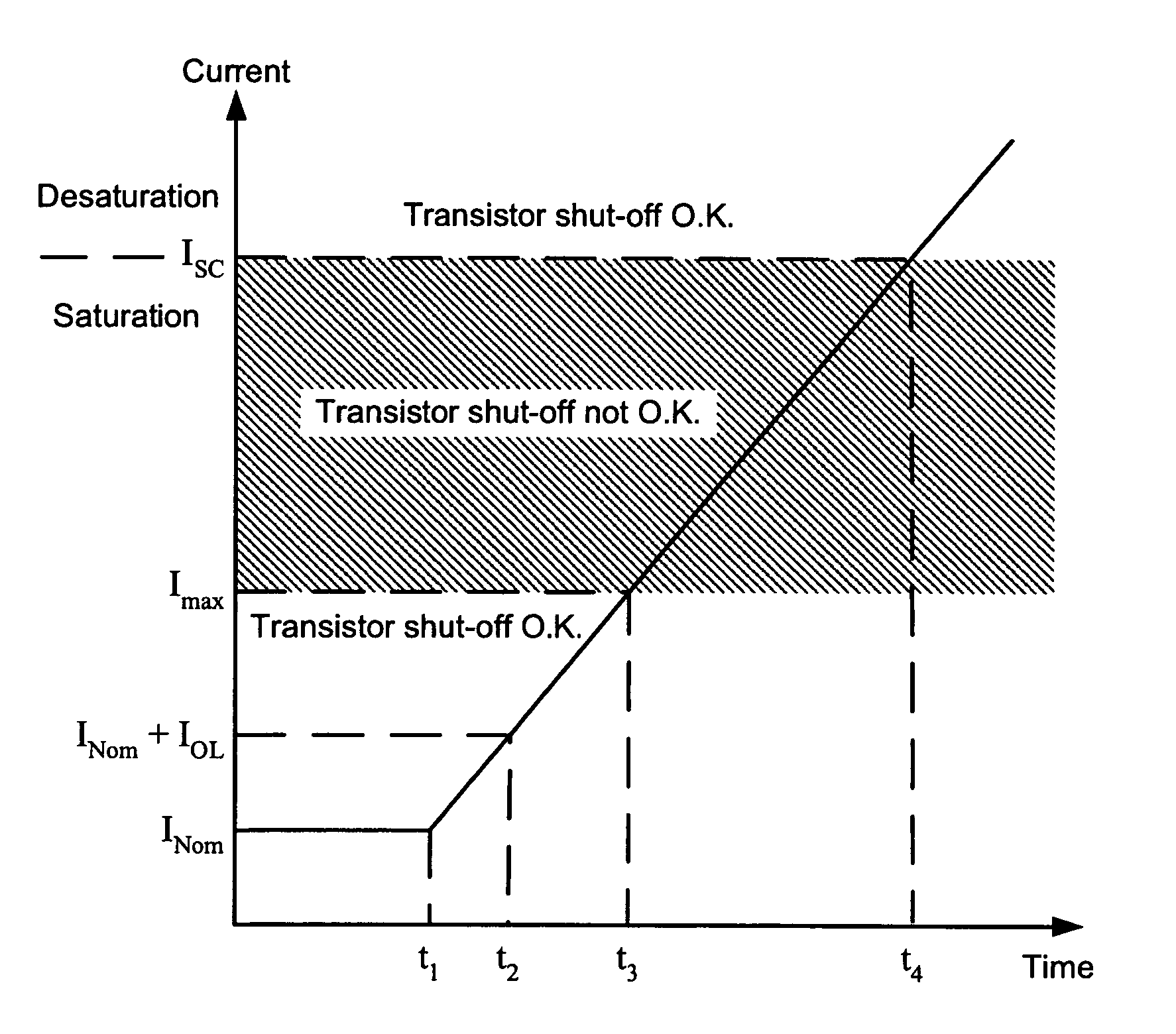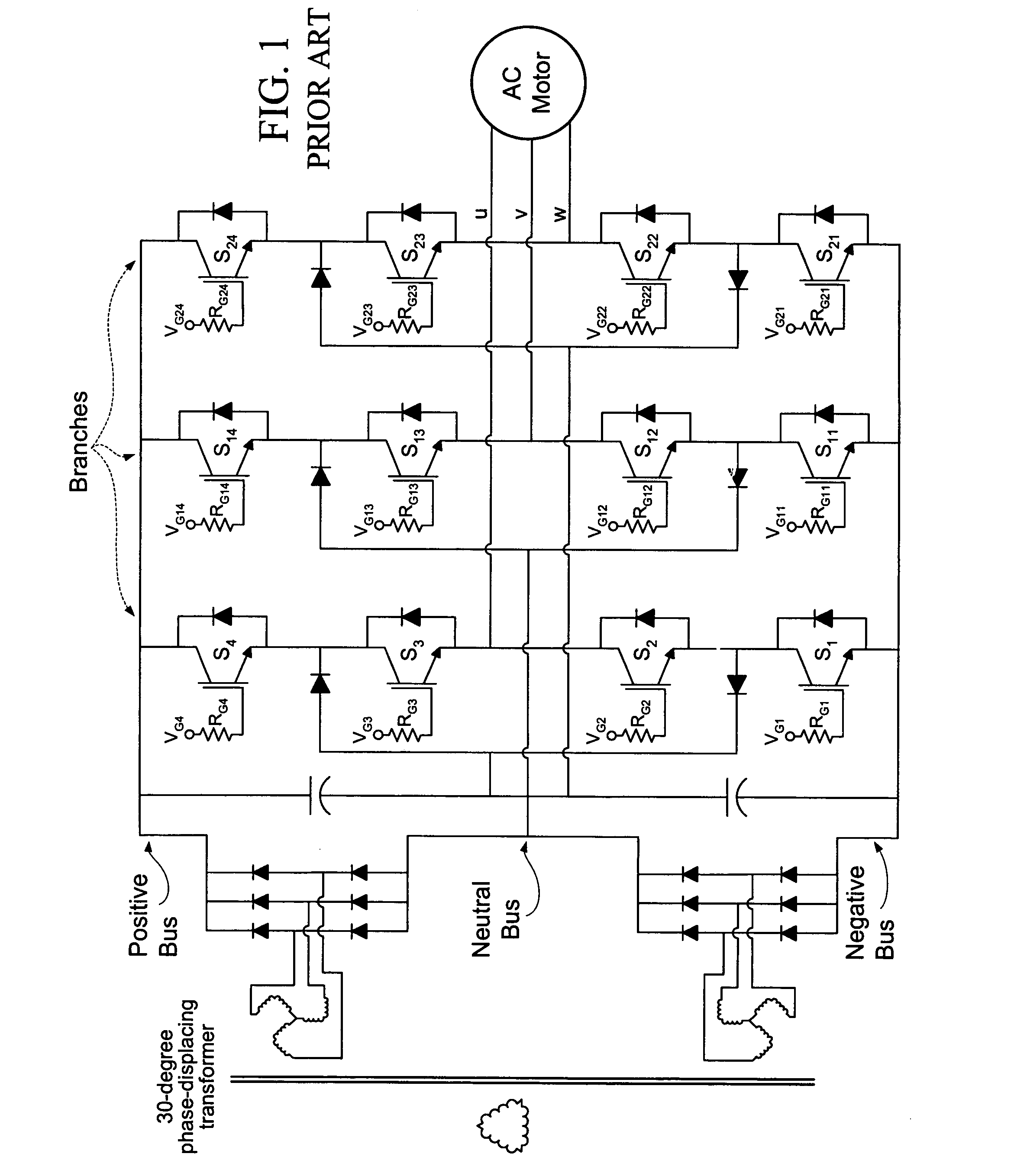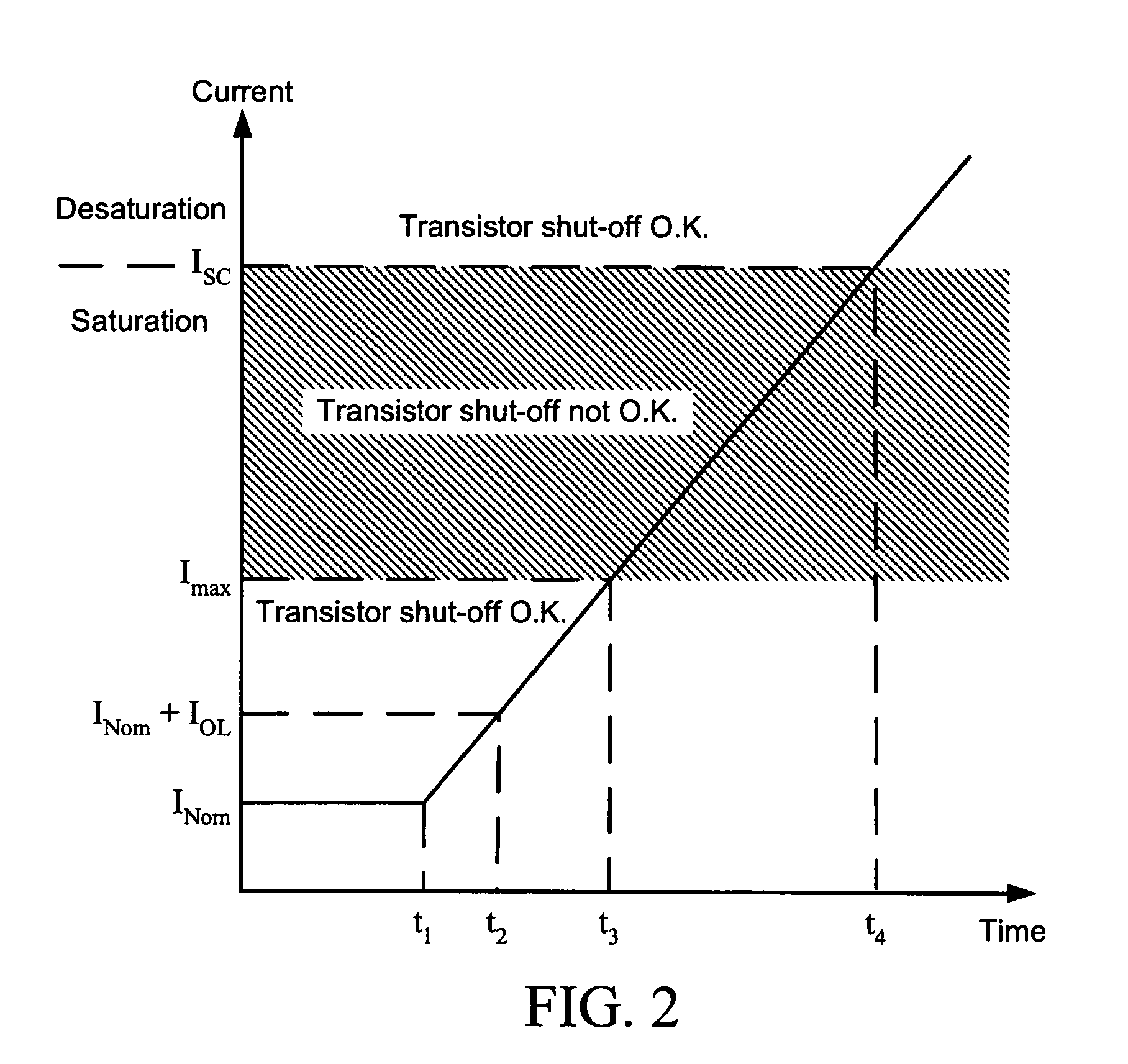Inverter bridge controller implementing short-circuit protection scheme
a protection scheme and inverter bridge technology, applied in the direction of dc-ac conversion without reversal, process and machine control, instruments, etc., can solve the problems of destroying transistors, voltage spikes, slow rise of current through igbts, etc., to improve statistical switch survivability, improve the likelihood of switch survivability, and fast and safe shut down
- Summary
- Abstract
- Description
- Claims
- Application Information
AI Technical Summary
Benefits of technology
Problems solved by technology
Method used
Image
Examples
Embodiment Construction
[0071]In the present disclosure, in the context of switching, the terms “on-state,”“conducting,” and “closed” are interchangeable, as are the terms “off-state,”“non-conducting,” and “open”.
[0072]FIGS. 6A, 6B, 7A, 7B, 8A, and 8B are a flow diagram illustrating exemplary embodiments for controlling an inverter bridge. The embodiments focus on a single phase output of the inverter bridge, representative of what is done for each of the three phase outputs.
[0073]Referring to FIG. 6A, the instantaneous output current Io of the phase is compared to a rated nominal current the rated nominal current (INom) of switches of the branch plus an overload current threshold (IOL) (step 601). INom is the nominal maximum current (100% current) that a switch can withstand without regard to temperature (provided the temperature is inside the rated range of the switch). In comparison, Imax is a maximum rated current of the switches of the branch, which typically is a maximum continuous current a switch c...
PUM
 Login to View More
Login to View More Abstract
Description
Claims
Application Information
 Login to View More
Login to View More - R&D
- Intellectual Property
- Life Sciences
- Materials
- Tech Scout
- Unparalleled Data Quality
- Higher Quality Content
- 60% Fewer Hallucinations
Browse by: Latest US Patents, China's latest patents, Technical Efficacy Thesaurus, Application Domain, Technology Topic, Popular Technical Reports.
© 2025 PatSnap. All rights reserved.Legal|Privacy policy|Modern Slavery Act Transparency Statement|Sitemap|About US| Contact US: help@patsnap.com



